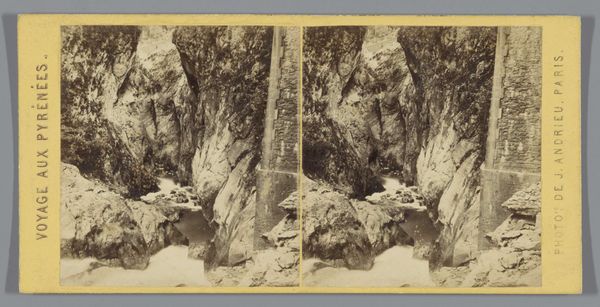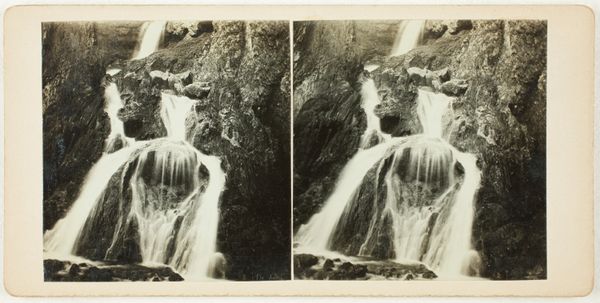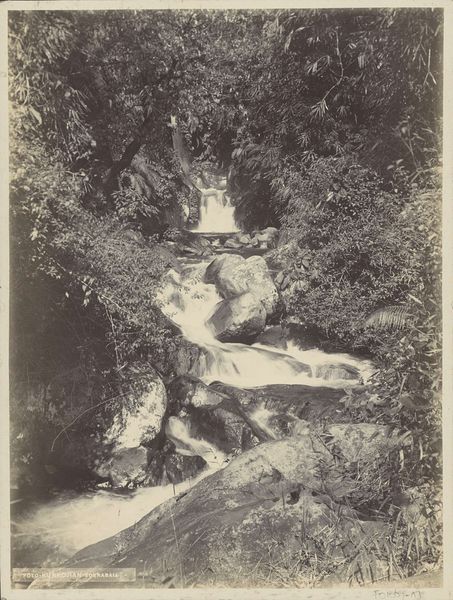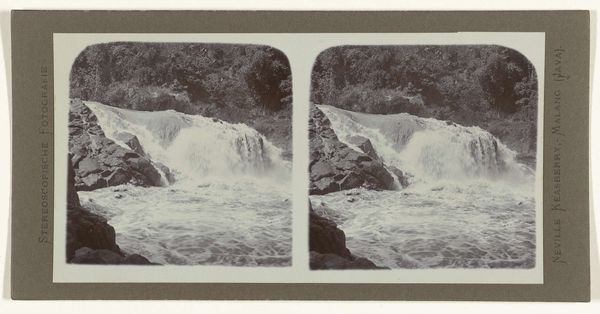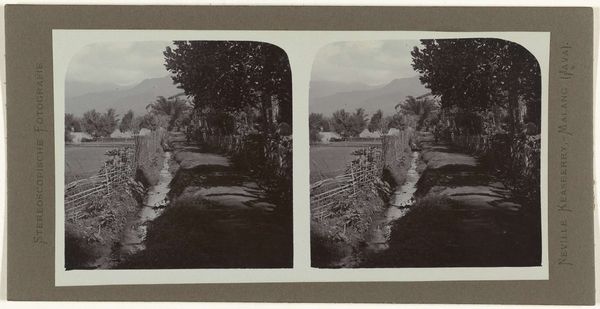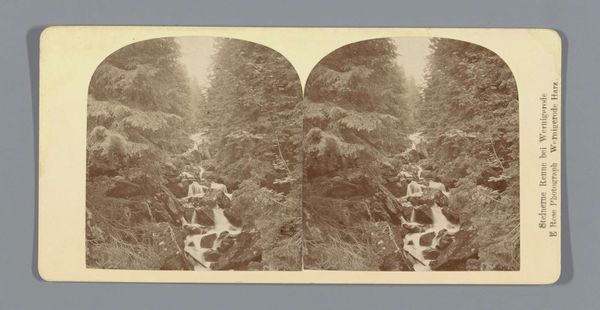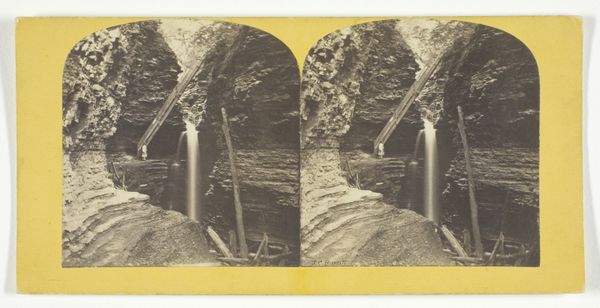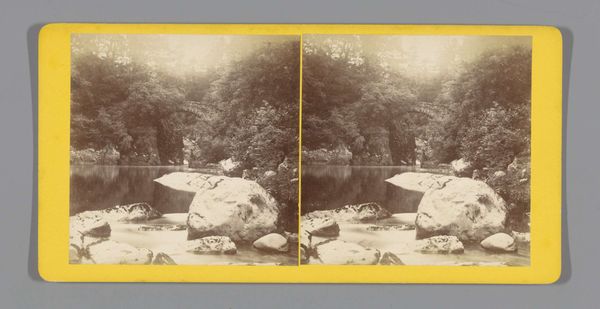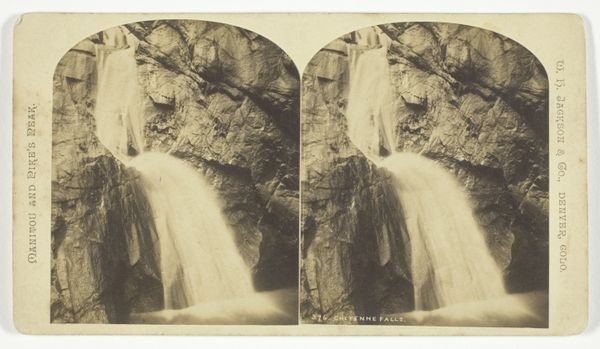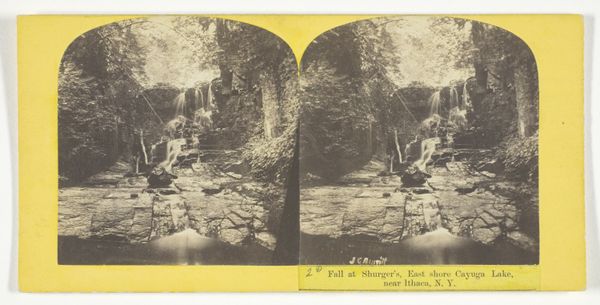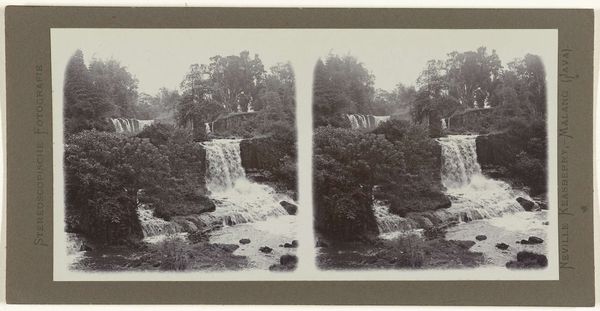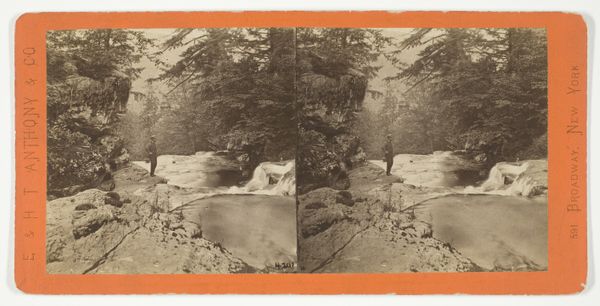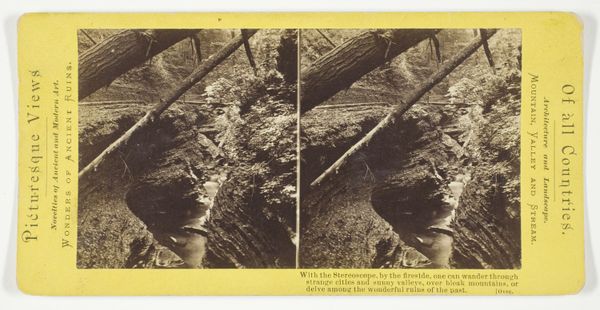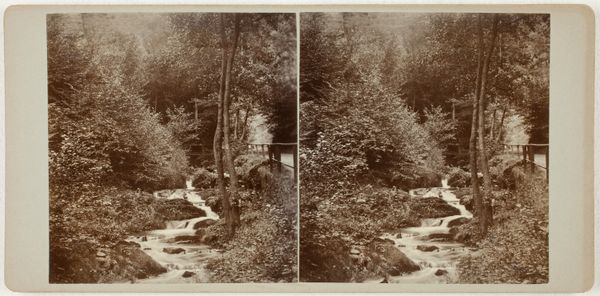
Rotsachtige stroomversnelling in een rivier nabij Prigen op Jawa. 1900 - 1935
0:00
0:00
photography, gelatin-silver-print
#
pictorialism
#
landscape
#
photography
#
gelatin-silver-print
#
realism
Dimensions: height 76 mm, width 152 mm
Copyright: Rijks Museum: Open Domain
Curator: Looking at "Rotsachtige stroomversnelling in een rivier nabij Prigen op Jawa" captured by Neville Keasberry between 1900 and 1935, it’s evident that the gelatin-silver print offers more than just a landscape. Editor: Absolutely. The composition gives me a sense of subdued strength, if that makes sense. The way the light interacts with the cascading water evokes the passage of time, the water continually flowing yet somehow unchanging. Curator: The creation of this particular silver gelatin print by Keasberry necessitates a deep dive into his method. Pictorialism blends into the realism present; it’s as if Keasberry intended to draw attention to photographic process as labor and artistic product simultaneously. This particular method brings in diverse visual approaches, and perhaps even, competing epistemologies. Editor: This tension makes sense considering it was taken during a time when Java, or Jawa as the title says, was undergoing significant transformations under Dutch colonial rule. The landscape is portrayed in an objective lens, but what’s also interesting is considering the representation of nature amidst exploitation by European colonial powers at that time. How can art act as a medium of advocacy? Does Keasberry adopt such a position? Curator: I believe understanding the value in the technology and process can shed light on some possible intentions of Keasberry’s artwork. We can only make an assumption here, but thinking of Keasberry’s tools as both mechanical but simultaneously capable of imbuing social awareness through material handling and labor reveals what is a rather clever approach to representing Javanese lands in times of transition. Editor: Indeed, these representations provide us the necessary entry point to address topics like place and power that were important at the turn of the century. By looking at his body of work, what else do you think Keasberry might be revealing through process? Curator: This photo allows us to speculate what the role of technology had on the landscape itself through time, and allows us to reflect on the methods in which human labor helped establish and manipulate images in the service of documenting such eras in transformation. Editor: Very well said. I guess these gelatin prints can be deceptively potent mediums after all.
Comments
No comments
Be the first to comment and join the conversation on the ultimate creative platform.
